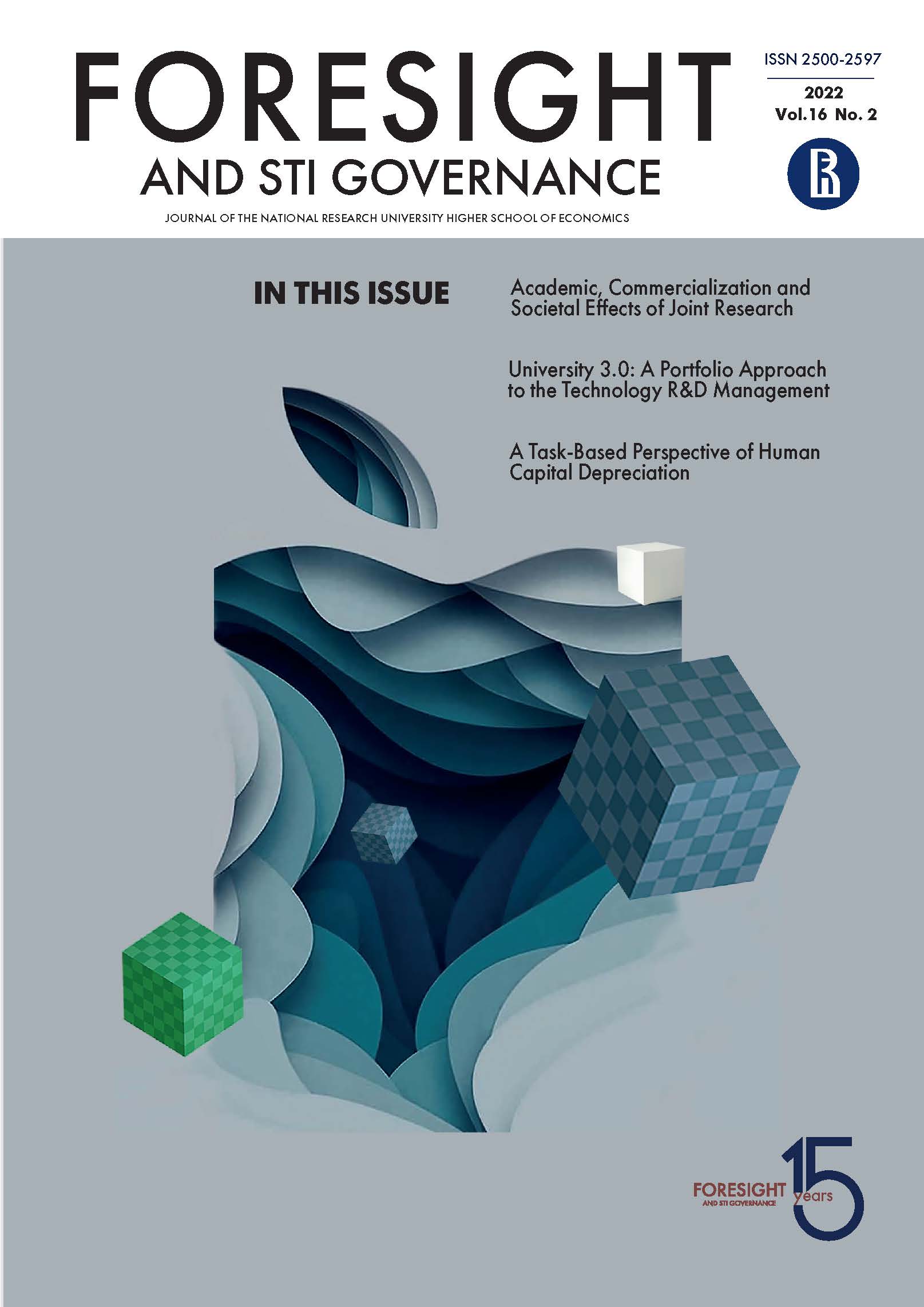Abstract
Information technologies are rapidly transforming the field of human resource management in organizations. The digital transformation of human resource management has become specifically important in the context of the COVID-19 pandemic, which has significantly accelerated the pace of digitalization of HR processes. Companies that are able to quickly take advantage of the opportunities of the implemented digital HRM technologies are in a better position than those in which digitalization was paid less attention. At the same time, the factors and consequences of digitalization of human resource management, as well as its relationship with various characteristics of firms, remain unclear today. This article provides an attempt to shed light on the key components of HRM digitalization analyzed against significant characteristics of organizations (size, personnel structure, staff turnover, performance) using personal data of 449 small, medium and large businesses operating in the Russian market. The collected data indicate the presence of two key components of digitalization: quantitative (reach or breadth) and qualitative (effectiveness of digital practices). We found that the combination of wide reach and high efficiency has not always been a sign of more successful and functional companies.
References
Appelbaum E., Bailey T., Berg P., Kallenberg A.L. (2000) Manufacturing advantage: Why high-performance work systems pay off, Ithaca, NY: Cornell University Press.
Bondarouk T., Brewster C. (2016) Conceptualising the future of HRM and technology research. International Journal of Human Resource Management, 27(21), 2652-2671. DOI: https://doi.org/10.1080/09585192.2016.1232296
Bondarouk T., Harms R., Lepak D. (2015) Does e-HRM lead to better HRM service? International Journal of Human Resource Management, 28(9), 1332-1362. DOI: https://doi.org/10.1080/09585192.2015.1118139
Bondarouk T., Parry E., Furtmueller E. (2016) Electronic HRM: Four decades of research on adoption and consequences. International Journal of Human Resource Management, 28(1), 98-131. DOI: https://doi.org/10.1080/09585192.2016.1245672
Bondarouk T.V., Ruël H.J.M. (2009) Electronic human resource management: Challenges in the digital era. International Journal of Human Resource Management, 20, 505-514. DOI: https://doi.org/10.1080/09585190802707235
Bowen D.E., Ostroff C. (2004) Understanding HRM-Firm Performance Linkages: The Role of the Strength of the HRM System. Academy of Management Review, 29(2), 203-221. https://psycnet.apa.org/doi/. DOI: https://doi.org/10.2307/20159029
Brockbank W. (1997) HR's Future on the Way to a Presence. Human Resource Management, 36, 65-69. :1%3C65::AID-HRM11%3E3.0.CO;2-D. DOI: https://doi.org/10.1002/(SICI)1099-050X(199721)36
Fitzgerald M., Kruschwitz N., Bonnet D., Welch M. (2014) Embracing digital technology: A new strategic imperative. MIT Sloan Management Review, 55(2), 1-12. https://sloanreview.mit.edu/projects/embracing-digital-technology/, accessed 15.11.2021.
Fossen F.M., Sorgner A. (2019). Mapping the Future of Occupations: Transformative and Destructive Effects of New Digital Technologies on Jobs. Foresight and STI Governance, 13(2), 10-18. DOI: https://doi.org/10.17323/2500-2597.2019.2.10.18
Gardner T.M., Wright P.M., Moynihan L.M. (2011) The impact of motivation, empowerment, and skill-enhancing practices on aggregate voluntary turnover: The mediating effect of collective affective commitment. Personnel Psychology, 64(2), 315-350. DOI: https://doi.org/10.1111/j.1744-6570.2011.01212.x
Huselid M., Minbaeva D. (2019) Big Data and Human Resource Management. In: The SAGE Handbook of Human Resource Management (eds. A. Wilkinson, N. Bacon, S. Snell, D. Lepak), Thousand Oaks, CA: SAGE Publications Ltd., pp. 494-507. DOI: https://doi.org/10.4135/9781529714852.n29
Kehoe R.R., Collins C.J. (2017) Human Resource Management and Unit Performance in Knowledge-Intensive Work. Journal of Applied Psychology, 102(8), 1222-1236. https://doi.apa.org/doi/. DOI: https://doi.org/10.1037/apl0000216
Kohansal M.A., Sadegh T., Haghshenas M. (2016) E-HRM: From Acceptance to Value Creation. Journal of Information Technology Management, 27(1), 18-27.
Lepak D.P., Snell S.A. (1998) Virtual HR: Strategic human resource management in the 21st century. Human Resource Management Review, 8(3), 215-234. DOI: https://doi.org/10.1016/S1053-4822(98)90003-1
Malik A., Budhwar P., Patel C., Srikanth N.R. (2020) May the bots be with you! Delivering HR cost-effectiveness and individualised employee experiences in an MNE. International Journal of Human Resource Management, Ahead-of-print, 1-31. DOI: https://doi.org/10.1080/09585192.2020.1859582
Njoku E. (2016) An analysis of the contribution of e-HRM to sustaining business performance (doctoral dissertation), Newport: University of South Wales.
Parry E. (2011) An examination of e-HRM as a means to increase the value of the HR function. International Journal of Human Resource Management, 22(5), 1146-1162. DOI: https://doi.org/10.1080/09585192.2011.556791
Parry E., Strohmeier S. (2014) HRM in the digital age - digital changes and challenges of the HR profession. Employee Relations, 36(4). DOI: https://doi.org/10.1108/ER-03-2014-0032
Parry E., Tyson S. (2011) Desired goals and actual outcomes of e-HRM. Human Resource Management Journal, 21(3), 335-354. DOI: https://doi.org/10.1111/j.1748-8583.2010.00149.x
Ruel H., Bondarouk T., Looise J.K. (2004) E-HRM: Innovation or Irritation: An explorative empirical study in five large companies on web-based HRM. Management Revue, 15, 364-381.
Siebert W.S., Zubanov N. (2009) Searching for the optimal level of employee turnover: A study of a large UK retail organization. Academy of Management Journal, 52(2), 294-313. DOI: https://doi.org/10.5465/amj.2009.37308149
Stone D.L., Deadrick D.L., Lukaszewski K.M., Johnson R. (2015) The influence of technology on the future of human resource management. Human Resource Management Review, 25(2), 216-231. DOI: https://doi.org/10.1016/j.hrmr.2015.01.002
Strohmeier S. (2009) Concepts of e-HRM consequences: A categorisation, review and suggestion. International Journal of Human Resource Management, 20, 528-543. DOI: https://doi.org/10.1080/09585190802707292
Strohmeier S. (2020) Digital human resource management: A conceptual clarification. German Journal of Human Resource Management: Zeitschrift für Personalforschung, 34(3), 345-365.
Ulrich D., Dulebohn J. H. (2015) Are we there yet? What's next for HR? Human Resource Management Review, 25(2), 188-204. DOI: https://doi.org/10.1016/j.hrmr.2015.01.004
Vial G. (2019) Understanding digital transformation: A review and a research agenda. The Journal of Strategic Information Systems, 28(2), 118-144. DOI: https://doi.org/10.1016/j.jsis.2019.01.003

This work is licensed under a Creative Commons Attribution 4.0 International License.


